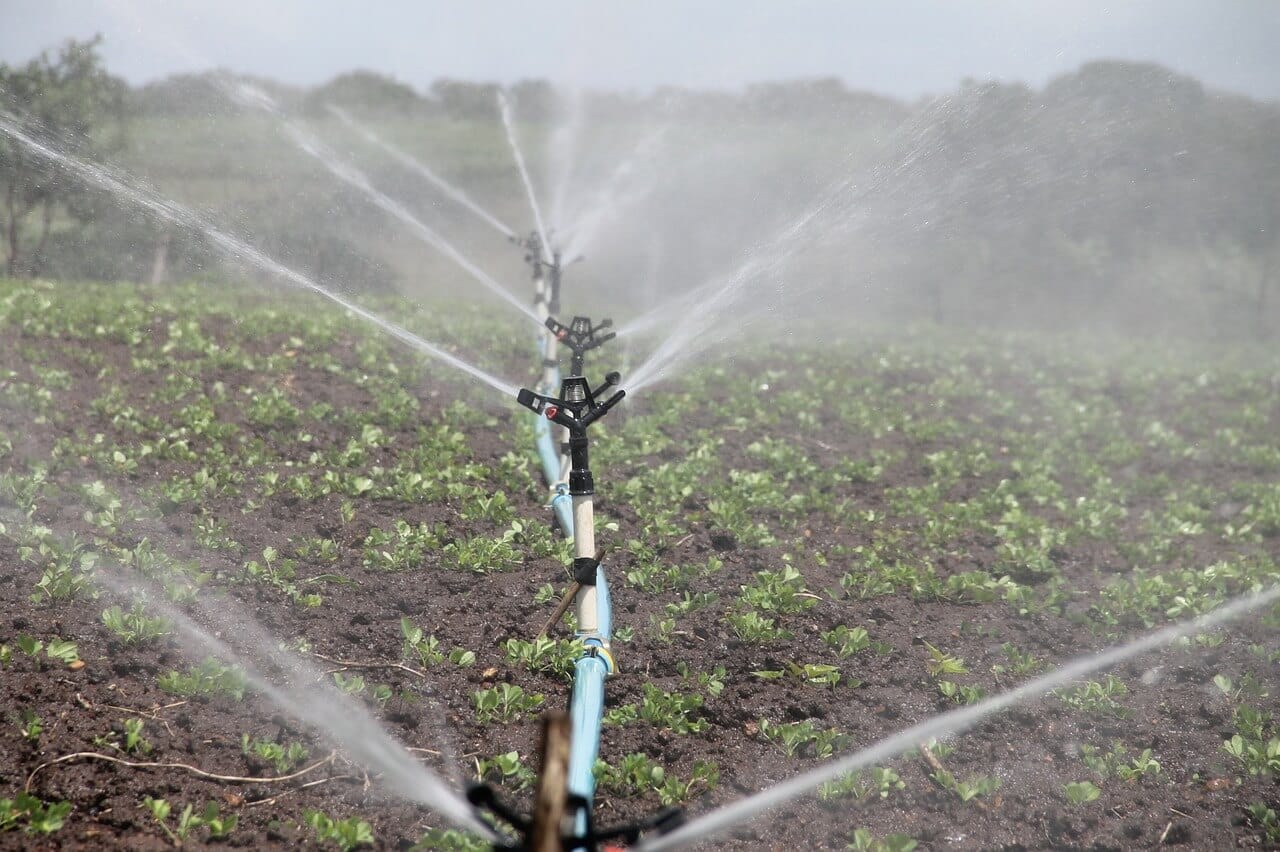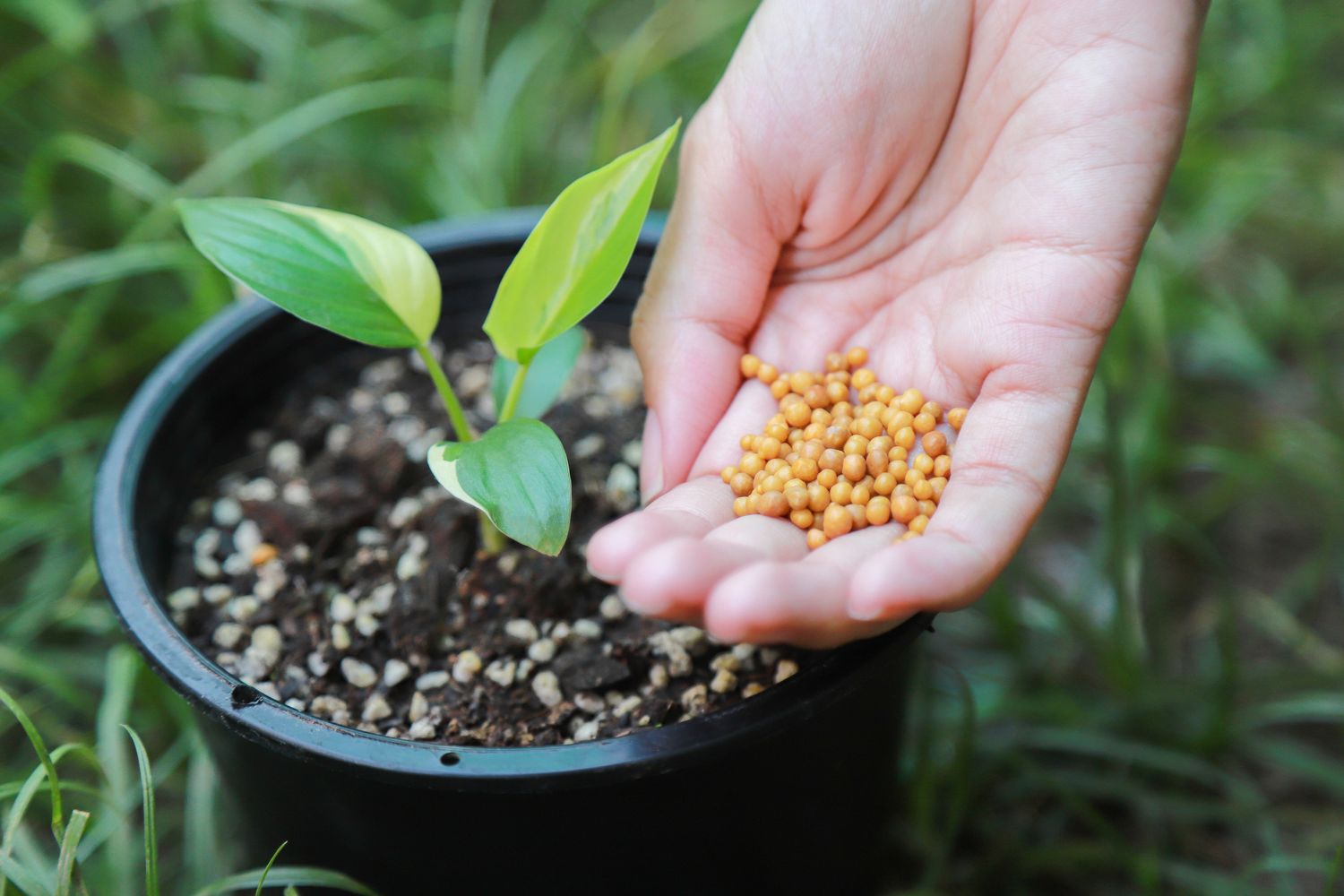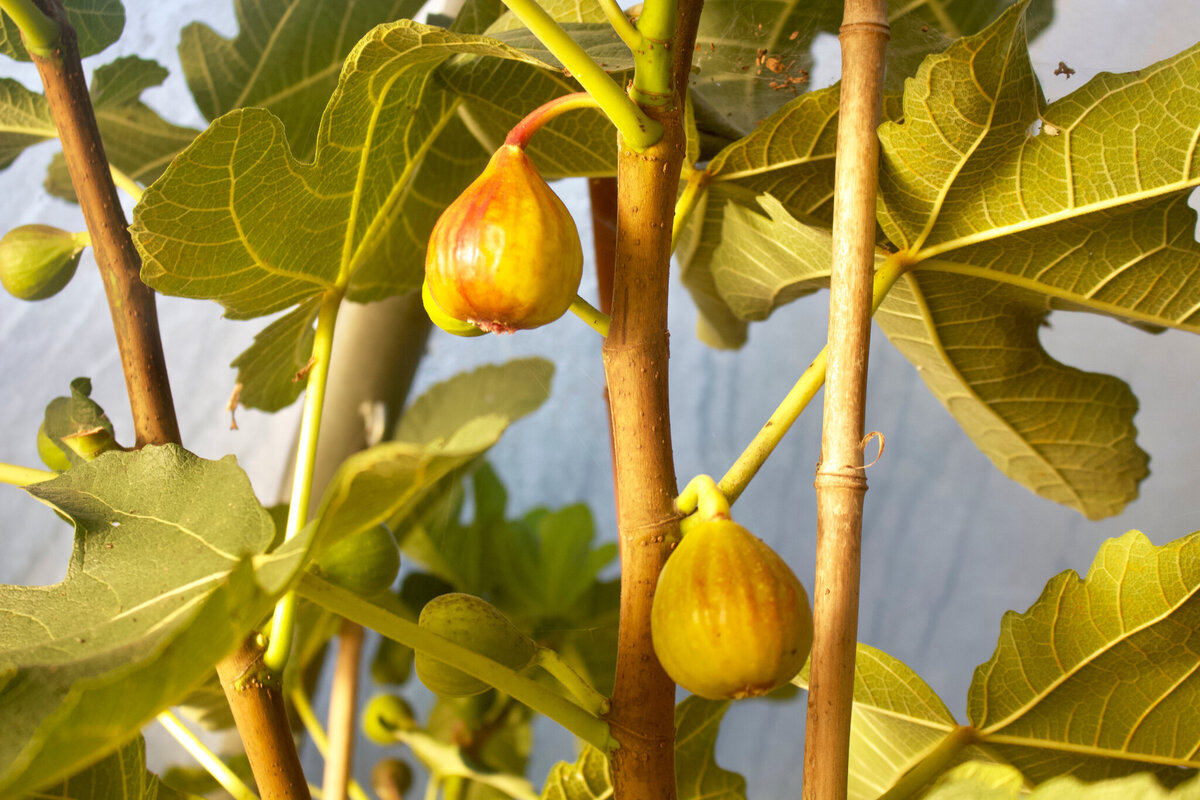Home>Gardening Basics>Understanding Soil>What Type Of Soil For Fiddle Leaf Fig


Understanding Soil
What Type Of Soil For Fiddle Leaf Fig
Published: February 11, 2024
Learn about the importance of understanding soil for your Fiddle Leaf Fig. Discover the perfect type of soil to ensure the health and growth of your plant.
(Many of the links in this article redirect to a specific reviewed product. Your purchase of these products through affiliate links helps to generate commission for Chicagolandgardening.com, at no extra cost. Learn more)
Table of Contents
Introduction
Welcome to the world of indoor gardening! If you’re a plant enthusiast or someone looking to add some greenery to your home, you’ve likely come across the beloved Fiddle Leaf Fig plant. Known for its large, glossy leaves and stunning appearance, the Fiddle Leaf Fig has become a popular choice for indoor plant enthusiasts.
However, many people underestimate the importance of choosing the right soil for their Fiddle Leaf Fig. The soil plays a vital role in the overall health and well-being of the plant. It provides essential nutrients, proper drainage, and a stable base for its roots.
In this article, we will delve into the world of Fiddle Leaf Fig soil and help you understand the various types of soil available. We’ll explore the benefits and drawbacks of each soil type to help you make an informed decision for your plant’s needs. Additionally, we’ll provide you with useful tips on how to pot your Fiddle Leaf Fig for optimal growth.
Whether you’re a seasoned indoor gardener or just starting with your first Fiddle Leaf Fig, this article will serve as a comprehensive guide to understanding soil requirements and potting techniques for this magnificent plant. So let’s dive in and discover the perfect soil that will make your Fiddle Leaf Fig thrive!
Understanding the Fiddle Leaf Fig Plant
The Fiddle Leaf Fig, scientifically known as Ficus lyrata, is a popular houseplant prized for its elegant and distinctive foliage. Native to the lush rainforests of West Africa, this plant belongs to the fig family and can grow up to 6 feet tall when cared for properly.
The Fiddle Leaf Fig is known for its large, violin-shaped leaves that can grow up to 18 inches long and 12 inches wide. The leaves have a glossy, dark green surface with prominent veins, giving them an eye-catching appeal. The plant’s natural growth habit is upright, making it a great choice for a statement plant in any indoor setting.
In addition to its aesthetic appeal, the Fiddle Leaf Fig offers several benefits as an indoor plant. It helps improve indoor air quality by reducing airborne toxins and increasing humidity levels. The dense foliage also aids in absorbing sound, making it an excellent choice for creating a calming and peaceful environment in your home or office.
However, it’s important to note that the Fiddle Leaf Fig can be a bit demanding when it comes to care requirements. Understanding its specific needs, including the right soil, is crucial for ensuring its long-term health and growth. The soil you choose will directly impact the plant’s ability to absorb nutrients and retain moisture, both of which are essential for its overall well-being.
Now that you have a basic understanding of the Fiddle Leaf Fig plant, let’s explore why choosing the right soil is vital for its continued success and how it can impact its growth and overall health.
Importance of Choosing the Right Soil
When it comes to the health and growth of your Fiddle Leaf Fig plant, the importance of choosing the right soil cannot be overstated. The soil provides a critical foundation for the roots, serving as a source of nutrients and anchoring the plant securely in its pot.
One of the primary reasons for choosing the right soil is to ensure proper drainage. Fiddle Leaf Figs are susceptible to root rot if their roots are constantly sitting in waterlogged soil. The right soil mixture will allow excess water to drain away while retaining enough moisture for the plant to thrive.
In addition to well-draining soil, selecting a soil mix that is rich in nutrients is essential for the Fiddle Leaf Fig’s growth and development. Nutrient-poor soil can lead to stunted growth, yellowing leaves, and overall poor health of the plant. The right soil will provide a balanced combination of organic matter, minerals, and other essential elements that promote healthy foliage and root development.
Choosing the right soil also plays a role in preventing pests and diseases. A well-draining soil mix reduces the risk of fungal issues and root rot, while a nutrient-rich soil helps strengthen the plant’s immune system, making it more resistant to pests and diseases.
Lastly, the right soil can make routine maintenance tasks, such as watering and fertilizing, more efficient. Soil that holds onto moisture evenly will prevent overwatering or underwatering, giving you better control over the plant’s hydration needs. It will also help the plant efficiently absorb and utilize nutrients from fertilizers, ensuring optimal growth and vitality.
Overall, choosing the right soil for your Fiddle Leaf Fig is crucial for its long-term health, growth, and overall success as an indoor plant. By providing the ideal soil conditions, you can create an environment that promotes robust foliage, strong root development, and a resilient plant that can withstand the challenges of indoor living.
Factors to Consider When Choosing Soil for Fiddle Leaf Fig
Choosing the right soil for your Fiddle Leaf Fig requires careful consideration of several factors to ensure optimal growth and health. Here are some key factors to keep in mind when selecting soil for your plant:
- Drainage: The soil should have excellent drainage capabilities to prevent waterlogged roots. Look for a well-draining soil mixture that allows excess water to flow freely, reducing the risk of root rot.
- Moisture Retention: While drainage is essential, it’s equally important that the soil retains moisture to keep the plant adequately hydrated. Look for a soil mix that strikes a balance between drainage and moisture retention, ensuring the plant has access to water when needed.
- Nutrient Content: Fiddle Leaf Figs require a soil mix that is rich in nutrients. Look for a well-balanced blend that includes organic matter, such as compost or peat moss, as well as minerals and essential elements for healthy growth. Alternatively, you can opt for a fertile potting mix specifically formulated for tropical plants.
- pH Level: Fiddle Leaf Figs thrive in slightly acidic to neutral soil, with a pH level between 6.0 and 7.0. Choose a soil mix that falls within this range to provide the ideal pH environment for your plant.
- Aeration: Good aeration is crucial for the roots to receive oxygen. The soil should be light and airy, allowing for proper airflow to the roots. Avoid compacted or heavy soils that can suffocate the roots and inhibit growth.
- Sterility: While some may opt for using garden soil, it’s best to avoid it for indoor plants. Garden soil may contain pathogens, pests, or unwanted seeds that can harm the Fiddle Leaf Fig. Opt for a sterile potting mix that is specifically formulated for houseplants.
By considering these factors, you can narrow down your options and choose a soil mix that meets the specific needs of your Fiddle Leaf Fig plant. Remember, finding the right soil is an important step towards creating a suitable environment for your plant to thrive.
Different Types of Soil for Fiddle Leaf Fig
When it comes to choosing the right soil for your Fiddle Leaf Fig, there are a few different options available. Each type of soil offers unique characteristics and benefits. Here are some common types of soil that are suitable for Fiddle Leaf Figs:
- Commercial Potting Mix: A commercial potting mix is a popular choice for indoor plants, including Fiddle Leaf Figs. These mixes are usually made with a blend of peat moss, perlite, vermiculite, and other organic matter. They provide good drainage, moisture retention, and nutrient content, making them an excellent all-around choice for your plant’s needs.
- Peat-Based Mix: Peat-based mixes are made primarily from peat moss and are known for their water retention properties. They are lightweight and provide good aeration and drainage. However, they can be acidic, so it’s important to monitor the pH level and adjust if necessary.
- Cactus/Succulent Mix: Cactus and succulent mixtures are well-draining and often contain ingredients like sand, perlite, and gritty materials. This type of soil is suitable for Fiddle Leaf Figs that prefer drier conditions or for those who tend to overwater their plants.
- DIY Soil Mix: If you prefer to create your own soil mix, you can do so by combining equal parts of peat moss, perlite, and well-aged compost or a high-quality potting soil. This DIY mix provides good drainage and nutrient content, allowing you to have more control over the soil composition.
Ultimately, the choice of soil will depend on your specific preferences and the needs of your Fiddle Leaf Fig. Consider factors such as your watering habits, the humidity levels in your home, and the availability of materials when selecting the right soil. It’s also important to monitor the plant’s response to the soil, making adjustments as needed to ensure optimal growth.
Remember, irrespective of the type of soil you choose, it’s crucial to avoid using garden soil, as it can cause drainage problems and may contain harmful pathogens or pests. Opt for a soil type specifically formulated for indoor plants to provide the best conditions for your Fiddle Leaf Fig’s overall health and well-being.
Benefits and Drawbacks of Each Soil Type
Each type of soil for Fiddle Leaf Figs has its own set of benefits and drawbacks. Understanding these characteristics will help you choose the right soil for your plant. Here are the advantages and disadvantages of some common soil types:
- Commercial Potting Mix: The benefits of using a commercial potting mix include good drainage, moisture retention, and nutrient content. These mixes are readily available and convenient to use. However, some commercial potting mixes may contain synthetic fertilizers or additives that may not align with your preference for organic gardening.
- Peat-Based Mix: Peat-based mixes provide excellent water retention capabilities. They are lightweight and offer good aeration, promoting healthy root growth. However, they can be acidic and may require occasional pH adjustment. Peat moss is also a non-renewable resource, which may be a concern for environmentally conscious gardeners.
- Cactus/Succulent Mix: The benefits of using a cactus/succulent mix include excellent drainage and suitability for plants that prefer drier conditions. This type of soil helps prevent overwatering and root rot. However, it is not the best choice if you tend to forget to water your Fiddle Leaf Fig, as it may dry out quickly.
- DIY Soil Mix: Creating your own soil mix gives you more control over the composition. You can adjust the ratio of ingredients to suit your plant’s specific needs. DIY soil mixes are often cost-effective and can be tailored to your preferences. However, they require more effort and time to prepare, and the quality of the mix may vary depending on the ingredients used.
It’s important to note that the drawbacks of each soil type can often be addressed by adjusting the composition or making amendments. For example, you can add perlite or sand to improve the drainage of a peat-based mix, or include organic matter to enhance the water retention of a cactus/succulent mix.
When choosing the right soil for your Fiddle Leaf Fig, consider your watering habits, environmental conditions, and the specific needs of your plant. It can be helpful to experiment with different soil types to find the one that works best for you and your plant.
Remember to monitor your Fiddle Leaf Fig’s response to the soil and make adjustments as necessary. Regularly inspect the plant for signs of overwatering or underwatering, and adjust the frequency and amount of water accordingly.
By understanding the benefits and drawbacks of each soil type, you can make an informed decision that will provide the best growing conditions for your Fiddle Leaf Fig, setting it up for success.
Tips for Potting a Fiddle Leaf Fig
Proper potting is crucial for the overall health and growth of your Fiddle Leaf Fig. Here are some essential tips to follow when potting your plant:
- Choose the right pot size: Select a pot that is 2-4 inches larger in diameter than the current pot. A pot that is too big can lead to overwatering, while a pot that is too small may restrict root growth and lead to root-bound conditions.
- Ensure drainage: Make sure the pot has drainage holes to allow excess water to escape. This prevents water from accumulating at the bottom and causing root rot. You can also place a layer of small rocks or a piece of mesh over the drainage holes to prevent soil from clogging them.
- Use the appropriate soil mix: Choose a well-draining soil mix that is suitable for Fiddle Leaf Figs, such as a commercial potting mix or a DIY blend. Avoid using garden soil, as it can lead to drainage issues and may contain harmful pathogens.
- Prepare the pot and soil: Fill the bottom of the pot with enough soil to raise the plant to the desired height. Carefully remove the Fiddle Leaf Fig from its nursery pot, gently loosen the roots, and place it in the new pot. Add more soil around the plant, making sure to level it and avoid overpacking.
- Water thoroughly: After potting, give your Fiddle Leaf Fig a thorough watering to settle the soil and eliminate air pockets around the roots. Water until it starts coming out of the drainage holes, ensuring that the entire root ball is evenly moistened.
- Place in suitable conditions: Find a suitable location for your Fiddle Leaf Fig, considering its light requirements. Place it in a spot with bright, indirect light, away from drafty areas and extreme temperature fluctuations.
- Maintain care routine: After potting, continue to provide proper care for your Fiddle Leaf Fig. This includes regular watering, monitoring humidity levels, and providing occasional fertilization. Adjust the watering schedule based on the plant’s needs and the moisture level of the soil.
- Monitor for signs of stress: Keep a close eye on your Fiddle Leaf Fig for any signs of stress, such as wilting leaves, yellowing, or drooping. Adjust your care routine accordingly, making changes to watering, light exposure, or humidity levels as needed.
Potting a Fiddle Leaf Fig requires attention to detail and proper technique. Following these tips will help ensure a successful potting process and promote healthy growth for your beloved plant. Remember, a well-potted Fiddle Leaf Fig is more likely to flourish and become a stunning centerpiece in your indoor oasis.
Conclusion
Choosing the right soil for your Fiddle Leaf Fig is essential for its overall health and growth. Understanding the importance of proper drainage, moisture retention, and nutrient content will help you create an optimal growing environment for your plant. Consider factors such as the type of soil, pH level, aeration, and sterility when making your soil selection.
Each type of soil has its own benefits and drawbacks. Commercial potting mixes offer convenience and balanced nutrients, while peat-based mixes provide excellent water retention. Cactus/succulent mixes are great for those who tend to overwater, and DIY blends allow for customization. By understanding these characteristics, you can choose the soil type that best suits your specific needs.
When it comes to potting your Fiddle Leaf Fig, remember to select an appropriately sized pot with good drainage. Choose a suitable soil mix and follow proper potting techniques to ensure the plant is securely rooted. Regular maintenance and monitoring will help you keep your Fiddle Leaf Fig healthy and thriving.
Remember, every Fiddle Leaf Fig is unique, and it may take some trial and error to find the perfect soil and care routine for your specific plant. Pay attention to its response and make adjustments as necessary. With the right soil and care, your Fiddle Leaf Fig will reward you with its lush foliage and elegant presence.
So go ahead, apply these tips and create the ideal soil environment for your Fiddle Leaf Fig. Enjoy the journey of nurturing and watching your plant thrive as it adds beauty and vitality to your indoor space!




